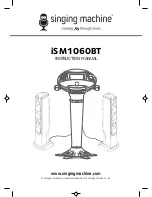
TippingPoint 10/110/330 Hardware Installation and Safety Guide
11
Environmental Requirements
For the product to run properly, your environment must meet the proper criteria. The following table details
the recommendations for temperature, humidity, and altitude settings for the Service Provider (SP)
environment.
Reliable Earthing
Ensure that an external grounding connection is available for the product and follow these guidelines:
•
For AC-powered products, use only the AC power cords that have been provided with the product.
Using other cords could be hazardous to your safety.
•
For DC-powered products, ensure that the product is grounded to the ground termination connector
labeled with the IEC 60417-5019 symbol:
Always make the ground connection first when you install the product, ensuring that it is in place before
turning on the power or connecting any network cables. When disconnecting the product, remove the
ground connection last, only after the power has been completely turned off and all cables have been
disconnected.
ESD Requirements
Damage from Electromagnetic Static Discharge (ESD) can occur when electronic components are
improperly handled. Its results can be complete or intermittent system failures. Proper ESD protection is
required whenever you handle equipment. It is not necessary to open the product chassis to add or remove
any components. The following general grounding guidelines apply in the event that a power supply
module or ZPHA module must be replaced.
•
Always use an ESD wrist strap when adding or removing components from the chassis.
•
Avoid touching the circuit boards or connectors on all cards and modules.
•
Avoid contact between the printed circuit boards and clothing. The wrist strap only protects components
from ESD voltages on the body. ESD voltages on clothing can still cause damage.
•
Place a removed component board-side-up on an antistatic surface or in a static-shielding container
that is also grounded to the same point as the IPS. If you plan to return the component to the factory,
immediately place it in a static-shielding container.
Hot Swapping Guidelines
Hot swapping allows you to remove and replace cards without disconnecting power to the system. Some
TippingPoint devices allow you to hot swap cards or modules. The TippingPoint has a comprehensive
detection system that senses automatically when you add or remove a card or module. It then runs
diagnostic and discovery routines and acknowledges the presence or absence of the card.
Table 2-1
Environmental Requirements
Environmental
Specifications
Description
Temperature
0 to 40 ° C (32 to 104 ° F) — Operating
-20 to 80° C (-4 to 176 ° F) — Storage
Humidity
5 to 95% (non-condensing)
Altitude
No degradation up to 10,000 feet above sea level
















































